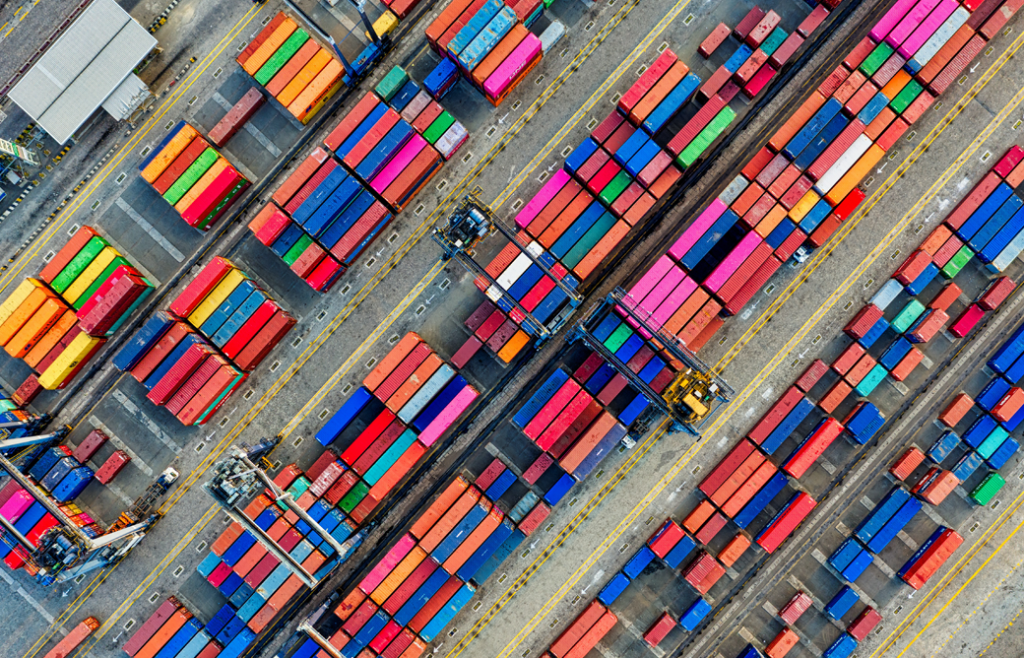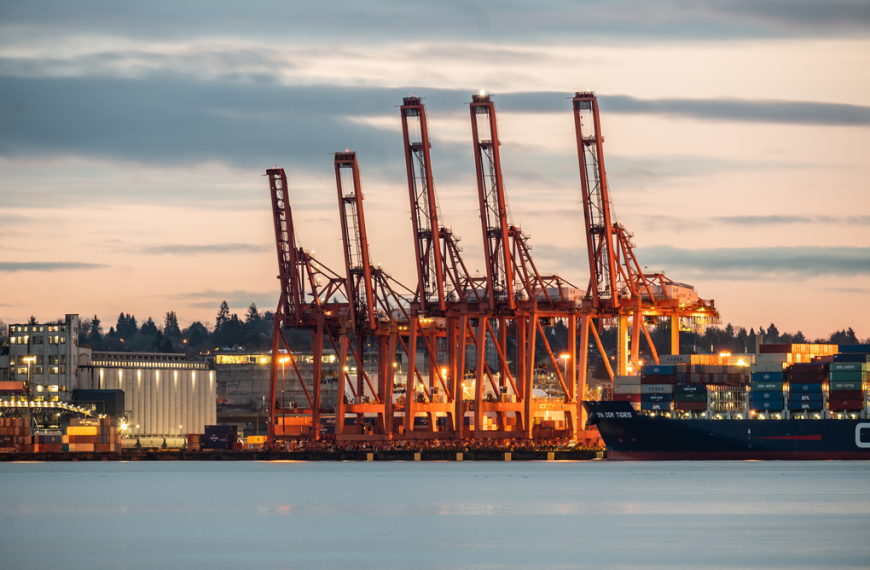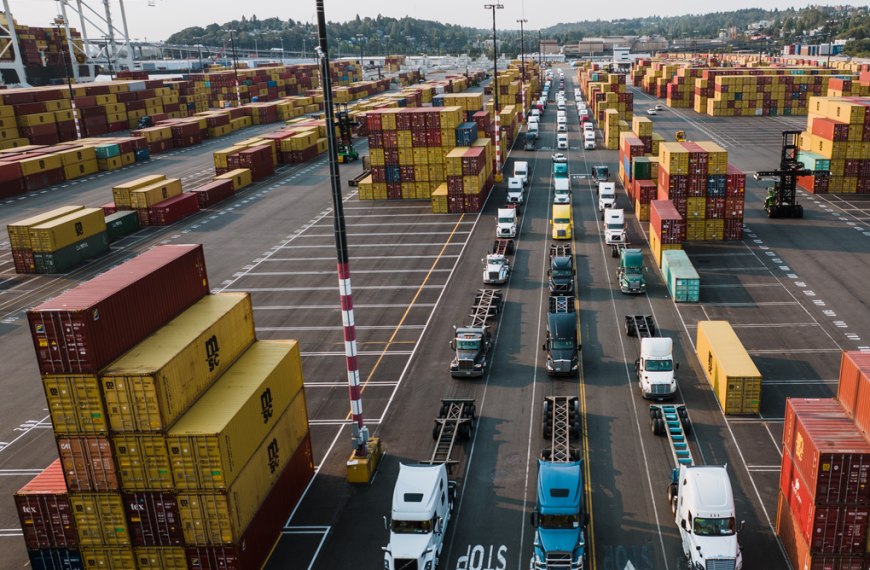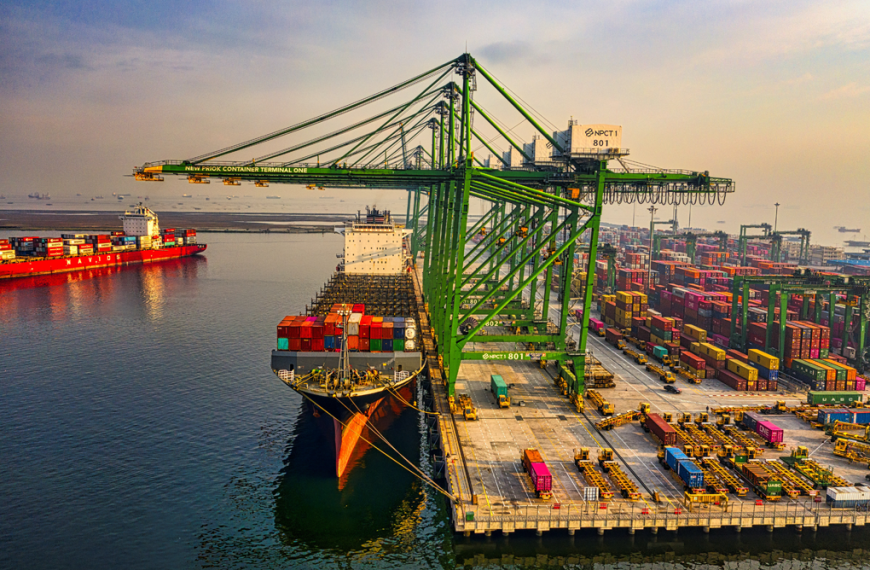Unlock the secrets of freight transportation security for secure shipments. Discover essential measures, advanced technology solutions, and supply chain vulnerabilities. In the dynamic world of freight transportation, ensuring the safe and secure delivery of shipments is of paramount importance. The complex network of Freight Transportation, Freight Brokerage, Last-Mile Delivery, and Freight Logistics entails various risks and challenges that demand our attention. To navigate this landscape successfully, it is crucial to delve into the secrets of Freight Transportation Security. Brace yourself as we embark on a journey to unlock the knowledge that will empower you to safeguard your shipments with confidence.
- Unveiling the Secrets of Freight Transportation Security for Secure Shipments
- Essential Security Measures: Safeguarding Freight Transportation in a Dynamic World
- Advanced Technology Solutions: Revolutionizing Freight Transportation Security
- 1. GPS Tracking Systems: Navigating the Path of Precision
- 2. Blockchain Technology: Immutable Security for the Digital Age
- 3. IoT (Internet of Things) Devices: Connecting the Pieces
- 4. Artificial Intelligence (AI) and Machine Learning (ML): Intelligence at Work
- 5. Biometric Authentication: Your Unique Identity
- Unveiling Supply Chain Vulnerabilities: Safeguarding Freight Transportation Security
- Enhancing Freight Transportation Security: The Power of Security Training and Awareness
- Navigating Freight Transportation Security: A Guide to Regulatory Compliance
- Unlocking Success through Collaboration and Partnerships in Freight Transportation Security
- Frequently Asked Questions (FAQs)
- Related Articles
Unveiling the Secrets of Freight Transportation Security for Secure Shipments
In the world of logistics, where Freight Transportation, Freight Brokerage, and Freight Logistics intersect, ensuring the safety and security of shipments becomes an indispensable task. One crucial aspect of this challenge lies in understanding the intricate Threat Landscape that surrounds freight transportation. From the grand scale of Sea Freight and Air Freight operations to the intricate nuances of Last-Mile Delivery, every step of the process demands our attention. Join us as we embark on an exploration, unraveling the secrets that will empower you to navigate this landscape with confidence and protect your shipments.

The Intricate Web of Threats: A Closer Look
In the realm of freight transportation security, knowledge is power. By gaining insights into the potential threats that can compromise the integrity of your shipments, you can proactively implement effective measures to counter them. Let’s dive into the depths of the Threat Landscape and unmask the lurking dangers:
- Cargo Theft: The Silent Predator
- Thieves and criminals are always on the lookout for valuable cargo. Learn about the different techniques they employ and discover strategies to safeguard your shipments against these unseen predators.
- Unauthorized Access: Breaking the Defense Line
- Intruders seeking unauthorized access to shipments pose a significant risk. Unveil the vulnerabilities within the freight transportation process and explore ways to bolster your security defenses.
- Tampering and Sabotage: Undermining Shipment Integrity
- Delve into the clandestine world of tampering and sabotage, where nefarious actors attempt to compromise the content and condition of your shipments. Uncover techniques to protect your cargo from these covert threats.
The Armor of Security: Equipping Your Shipments
Now that we have identified the threats that loom large, it’s time to equip your shipments with the necessary armor to ensure their safe passage. Discover an array of security measures and best practices that will strengthen your defenses:
- Freight Forwarders: Guardians of Secure Shipments
- Freight forwarders play a vital role in orchestrating secure freight transportation. Explore their expertise, methods, and industry best practices that contribute to the overall security of your shipments.
- Advanced Technology Solutions: Fortifying Your Cargo
- Embrace the power of modern technologies that have revolutionized the field of freight transportation security. From GPS tracking systems to advanced surveillance tools, leverage these innovations to protect your shipments.
- Collaborative Partnerships: Strengthening the Chain
- Forge strong partnerships with carriers, freight forwarders, and other stakeholders to establish a united front against security threats. Discover the benefits of collaborative efforts and how they can fortify the entire supply chain.
Cultivating a Security-Conscious Culture: Empowering Your Team
Beyond technological advancements, building a security-conscious culture within your organization is paramount. Empower your workforce with the knowledge and skills to actively contribute to the security of your shipments:
- Training and Education: Arming Your Team
- Invest in comprehensive training programs that educate your employees about the nuances of freight transportation security. Equip them with the necessary skills to identify and mitigate potential risks.
- Continuous Improvement: A Journey of Vigilance
- Security is an ongoing effort. Encourage a mindset of continuous improvement within your organization. Foster a culture that values feedback, risk assessment, and adaptation to stay one step ahead of emerging threats.

Essential Security Measures: Safeguarding Freight Transportation in a Dynamic World
In the fast-paced realm of logistics, where Freight Transportation, Freight Brokerage, and Freight Logistics converge, ensuring the safety and security of shipments is of paramount importance. As the final leg of the journey, Last-Mile Delivery carries its own unique challenges. To navigate this dynamic landscape successfully, implementing essential security measures is crucial. Join us as we explore these measures, shedding light on the secrets that will fortify your freight transportation security and protect your valuable cargo.
1. Embrace Technology: Your Shield in the Digital Age
In the digital era, technology plays a vital role in safeguarding freight transportation. Leverage cutting-edge solutions to enhance security and maintain control over your shipments:
- GPS Tracking Systems: Employ state-of-the-art GPS tracking technology to monitor the real-time location and movement of your shipments. This enables you to detect any deviations from the planned route and take immediate action if necessary.
- Surveillance and Monitoring: Install advanced surveillance systems, including cameras and sensors, at key points along the transportation route. These systems act as vigilant eyes, alerting you to any suspicious activities or unauthorized access attempts.
2. Secure Packaging: Protecting from the Inside Out
Your cargo’s packaging is its first line of defense. Implement secure packaging practices to mitigate risks and safeguard your shipments:
- Tamper-Evident Seals: Utilize tamper-evident seals on containers and packages. These seals provide visible evidence of tampering, making it easier to identify potential security breaches and take appropriate action.
- Secure Container Locking: Use high-quality locks and seals on shipping containers to prevent unauthorized access during transit. Consider employing smart locks that provide additional security features, such as remote monitoring and tamper alerts.
3. Training and Vigilance: Empowering Your Team
A well-trained and vigilant team is an invaluable asset in the realm of freight transportation security. Invest in training programs and instill a culture of vigilance among your personnel:
- Security Awareness Training: Educate employees about the various security risks associated with freight transportation and provide them with guidelines on identifying and reporting potential threats. Foster a proactive mindset to ensure everyone remains vigilant throughout the entire logistics process.
- Incident Response Planning: Develop comprehensive incident response plans that outline the necessary steps to be taken in the event of a security breach. Conduct regular drills and simulations to ensure that your team is well-prepared to handle emergencies swiftly and effectively.
4. Collaboration and Partnerships: Strength in Unity
Collaboration among stakeholders is crucial for a robust freight transportation security ecosystem. Foster partnerships and establish strong relationships with relevant parties:
- Freight Forwarders: Collaborate closely with freight forwarders who have expertise in navigating the complexities of secure freight transportation. Leverage their industry knowledge to develop customized security solutions for your specific needs.
- Government Agencies and Authorities: Establish connections with local law enforcement agencies and regulatory bodies. Engage in information sharing and stay updated on the latest security regulations and protocols to maintain compliance and enhance security measures.
5. Continuous Improvement: Evolving with the Changing Landscape
Freight transportation security is a dynamic field that requires constant adaptation and improvement. Stay ahead of emerging risks by embracing a mindset of continuous improvement:
- Risk Assessments: Regularly conduct comprehensive risk assessments to identify vulnerabilities and potential security gaps in your freight transportation processes. Use the findings to refine your security measures and implement necessary adjustments.
- Technological Advancements: Stay abreast of the latest advancements in security technology relevant to the freight transportation industry. Evaluate new solutions and determine if they can enhance your security infrastructure and address emerging threats more effectively.
As you embark on the path to fortify your freight transportation security, remember that each measure contributes to the overall safety of your shipments. By embracing technology, empowering your team, fostering collaborations, and embracing a culture of continuous improvement, you pave the way for secure Sea Freight, Air Freight, and Last-Mile Delivery.
Protect your cargo, ensure the integrity of your shipments, and build a reputation for reliability and security in the world of freight transportation.

Advanced Technology Solutions: Revolutionizing Freight Transportation Security
In the ever-evolving landscape of logistics, where Freight Transportation, Freight Brokerage, and Freight Logistics intersect, ensuring the safety and security of shipments is a paramount concern. The final leg of the journey, Last-Mile Delivery, presents its own unique challenges. Fortunately, advanced technology solutions have emerged as powerful allies in fortifying freight transportation security. Join us as we explore the cutting-edge technologies revolutionizing the industry, from the vast expanse of Sea Freight to the swift efficiency of Air Freight.
1. GPS Tracking Systems: Navigating the Path of Precision
- Real-Time Visibility: Embrace the power of GPS tracking systems to gain real-time visibility into the whereabouts of your shipments. By tracking their precise location at all times, you can ensure they remain on the intended route and promptly address any deviations.
- Geofencing: Set up virtual perimeters known as geofences around designated areas. Receive instant alerts if your shipments breach these boundaries, enabling you to take immediate action and prevent unauthorized access or potential security breaches.
2. Blockchain Technology: Immutable Security for the Digital Age
- Tamper-Proof Records: Leverage the decentralized and tamper-proof nature of blockchain technology to establish an immutable record of each transaction and event in the freight transportation process. By ensuring the integrity of the information, you can eliminate the risk of data manipulation and enhance security.
- Smart Contracts: Automate contract execution and enforce strict adherence to predefined terms and conditions through smart contracts. This eliminates the need for intermediaries, reduces the potential for fraud, and enhances transparency and trust among stakeholders.
3. IoT (Internet of Things) Devices: Connecting the Pieces
- Sensor Networks: Deploy IoT sensors across your supply chain to monitor various parameters such as temperature, humidity, vibration, and shock. By capturing real-time data, you can identify anomalies that may indicate potential security risks or quality issues during freight transportation.
- Asset Tracking: Equip your shipments with IoT-enabled tracking devices to monitor their movement, condition, and security status. From precise location tracking to detecting unauthorized access attempts, these devices offer comprehensive insights to ensure the safety of your cargo.
4. Artificial Intelligence (AI) and Machine Learning (ML): Intelligence at Work
- Threat Detection: Harness the power of AI and ML algorithms to analyze vast amounts of data and identify patterns that may indicate security threats or anomalies. By detecting potential risks in real-time, you can proactively mitigate them and strengthen your freight transportation security.
- Predictive Analytics: Leverage AI and ML models to predict potential security incidents and optimize your security strategies accordingly. By analyzing historical data and contextual information, these technologies empower you to take preventive measures and minimize the likelihood of disruptions.
5. Biometric Authentication: Your Unique Identity
- Fingerprint Recognition: Implement biometric fingerprint scanners to ensure secure access control at various checkpoints within the freight transportation process. By authenticating the identity of personnel, you can prevent unauthorized individuals from tampering with shipments or gaining access to restricted areas.
- Facial Recognition: Leverage facial recognition technology to verify the identity of individuals involved in freight transportation operations. This adds an extra layer of security, particularly in high-security environments, and helps deter potential threats.
The advancement of technology has revolutionized freight transportation security, empowering stakeholders to proactively protect their shipments at every stage. By embracing GPS tracking systems, blockchain technology, IoT devices, AI and ML algorithms, and biometric authentication, you can stay one step ahead of potential threats and ensure the safe passage of your cargo.
Embrace the possibilities, unlock the potential, and pave the way for a future where Freight Transportation Security reaches new heights of efficiency and reliability.

Unveiling Supply Chain Vulnerabilities: Safeguarding Freight Transportation Security
In the intricate web of Freight Transportation, Freight Brokerage, and Freight Logistics, ensuring the safety and security of shipments is of paramount importance. From the sprawling expanses of Sea Freight to the swift efficiency of Air Freight, every step of the supply chain presents its own set of challenges. Today, we delve into the vulnerabilities that can compromise freight transportation security and explore strategies to fortify the resilience of your operations.
1. Inadequate Risk Assessment: A Chink in the Armor
- Identifying Weak Links: Conduct thorough risk assessments to identify potential vulnerabilities throughout your supply chain. Evaluate factors such as cargo value, transportation routes, storage facilities, and information systems to uncover potential weak links that could be exploited by malicious actors.
- Holistic Approach: Take a comprehensive view of your supply chain and assess risks not only within your own operations but also among your partners and third-party vendors. Collaboration and information sharing are key to identifying vulnerabilities that may exist beyond your immediate control.
2. Lack of Supply Chain Visibility: Darkness Breeds Uncertainty
- Real-Time Tracking: Implement advanced tracking systems and technologies to gain real-time visibility into your shipments. Leverage GPS tracking, RFID tags, or IoT sensors to monitor the location, condition, and security of your cargo throughout its journey. This visibility enables swift response to any deviations or anomalies, enhancing the overall security of your freight transportation.
- Data Integration: Integrate data from various sources, including transportation providers, warehouses, and customs authorities, into a unified platform. By consolidating and analyzing this information, you can detect patterns, identify potential risks, and make informed decisions to protect your supply chain.
3. Cybersecurity Threats: Unseen Enemies in the Digital Age
- Data Protection: Safeguard sensitive information by implementing robust cybersecurity measures. Encrypt data, employ multi-factor authentication, and establish secure communication channels to protect against unauthorized access, data breaches, and cyber-attacks that can disrupt your supply chain operations.
- Vendor Due Diligence: Evaluate the cybersecurity practices of your partners and vendors. Ensure they adhere to industry standards, have robust security protocols in place, and regularly update their systems to mitigate potential vulnerabilities that could compromise the integrity of your supply chain.
4. Physical Security Breaches: Guarding Against Intruders
- Access Control Measures: Establish stringent access control measures at various points along your supply chain. Implement physical barriers, surveillance systems, and authentication protocols to prevent unauthorized entry and secure sensitive areas such as warehouses, loading docks, and distribution centers.
- Personnel Training: Educate your workforce on the importance of maintaining physical security and recognizing suspicious activities. Conduct regular training sessions to enhance their awareness, responsiveness, and ability to report and mitigate potential security breaches.
5. Contingency Planning: Preparing for the Unexpected
- Disaster Recovery: Develop robust contingency plans to address disruptions caused by natural disasters, accidents, or unforeseen events. Identify alternative routes, backup storage facilities, and communication channels to ensure continuity of operations and minimize the impact on your supply chain’s security.
- Collaborative Networks: Foster strong relationships with freight forwarders, logistics providers, and emergency response agencies. By establishing collaborative networks, you can leverage their expertise and resources during crisis situations, enhancing the resilience and security of your freight transportation operations.
By recognizing and addressing these supply chain vulnerabilities, you can fortify the security of your Last-Mile Delivery, protect your valuable cargo, and uphold the trust placed in your operations. Safeguard your freight transportation security, embrace proactive measures, and navigate the supply chain landscape with confidence.

Enhancing Freight Transportation Security: The Power of Security Training and Awareness
In the realm of Freight Transportation, Freight Brokerage, and Freight Logistics, the key to a robust security framework lies not only in advanced technologies and stringent protocols but also in the knowledge and vigilance of those involved. From the critical stages of Last-Mile Delivery to the meticulous coordination of Sea Freight and Air Freight, security training and awareness play a vital role in safeguarding shipments and fortifying the entire supply chain. Join us as we explore the importance of security training, raise awareness about potential risks, and empower individuals to become the frontline defenders of freight transportation security.
1. Comprehensive Security Training Programs
- Risk Awareness: Equip your employees with the knowledge and understanding of potential security risks and vulnerabilities throughout the freight transportation process. Train them to recognize suspicious activities, identify signs of tampering, and respond effectively to security incidents.
- Standard Operating Procedures: Develop and implement standardized security procedures that cover areas such as access control, cargo handling, vehicle inspections, and emergency response. Ensure that all employees are trained on these procedures and regularly update them to adapt to evolving security challenges.
2. Cargo Security Best Practices
- Cargo Handling Protocols: Train personnel on proper handling and secure loading of freight, emphasizing the importance of verifying shipment integrity, sealing containers, and preventing unauthorized access during transit.
- Documentation and Verification: Educate employees about the significance of accurate documentation, including bills of lading, manifests, and customs paperwork. Emphasize the need for meticulous verification of cargo and relevant documents at various checkpoints to minimize the risk of fraudulent activities.
3. Cybersecurity Awareness
- Phishing and Social Engineering: Raise awareness about common cyber threats such as phishing emails and social engineering scams. Educate employees on how to identify and report suspicious communications and avoid falling victim to cyber-attacks that could compromise sensitive data or disrupt freight transportation operations.
- Password Security: Promote good password hygiene practices, including using strong, unique passwords and regularly updating them. Encourage the use of multi-factor authentication and provide guidance on securely storing and sharing login credentials.
4. Reporting and Incident Response
- Whistleblowing Channels: Establish confidential reporting mechanisms that allow employees to report security concerns or suspicious activities without fear of reprisal. Encourage a culture of accountability and emphasize the importance of timely reporting to mitigate potential risks.
- Incident Response Plans: Develop comprehensive incident response plans that outline step-by-step procedures for handling security incidents, such as theft, unauthorized access, or suspicious packages. Conduct regular drills and simulations to test the effectiveness of the plans and identify areas for improvement.
5. Collaboration and Information Sharing
- Industry Partnerships: Foster collaboration with freight forwarders, industry associations, and law enforcement agencies to exchange information on emerging security threats and share best practices. Participate in security forums, conferences, and workshops to stay updated on the latest trends and technologies.
- Employee Engagement: Encourage employees to actively contribute to the enhancement of freight transportation security. Establish channels for sharing security-related insights, ideas, and suggestions. Recognize and reward individuals who demonstrate exceptional commitment to security awareness and compliance.
By investing in comprehensive security training programs, promoting cargo security best practices, raising cybersecurity awareness, establishing robust incident response mechanisms, and fostering collaboration, you can build a resilient defense against potential threats to freight transportation security. Remember, every individual involved in the supply chain has a vital role to play in ensuring the integrity and safety of shipments.
Together, let us champion security training and awareness to elevate the standards of freight transportation security and inspire a culture of vigilance and excellence.
Navigating Freight Transportation Security: A Guide to Regulatory Compliance
In the ever-evolving landscape of Freight Transportation, Freight Brokerage, and Freight Logistics, regulatory compliance serves as a critical foundation for ensuring the safety and security of shipments. From the intricate network of Last-Mile Delivery to the vast expanse of Sea Freight and Air Freight, understanding and adhering to relevant regulations is essential for maintaining the integrity of the supply chain. Join us as we unravel the complexities of regulatory compliance and provide insights to help you navigate the regulatory maze with confidence.
1. Familiarizing Yourself with Applicable Regulations
- Freight Transportation Security: Stay updated on industry-specific regulations and guidelines related to freight transportation security. These may include requirements for cargo screening, access control, security plans, and incident reporting. Familiarize yourself with organizations such as the Transportation Security Administration (TSA) and their specific regulations for freight transportation security.
- Freight Brokerage: Understand the legal and regulatory obligations for freight brokerage operations, including licensing requirements, recordkeeping, and compliance with the Federal Motor Carrier Safety Administration (FMCSA) regulations. Stay informed about changes in regulations and ensure your operations align with the necessary standards.
- Last-Mile Delivery: Consider local regulations and requirements that may apply to last-mile delivery, such as restrictions on vehicle size, parking regulations, and traffic management. Familiarize yourself with local zoning laws and any permits or licenses required for operating in specific areas.
2. Developing Comprehensive Security Plans
- Risk Assessment: Conduct thorough risk assessments to identify vulnerabilities and potential security threats in your freight transportation operations. Analyze factors such as cargo value, transportation routes, and storage facilities to develop comprehensive security plans that address identified risks.
- Access Control and Screening: Implement robust access control measures, including proper identification protocols and visitor management systems. Establish cargo screening procedures to detect and prevent unauthorized or dangerous items from entering the supply chain.
3. Data Protection and Privacy
- Data Security: Safeguard sensitive information by implementing data protection measures, including encryption, secure storage, and access controls. Ensure compliance with data protection laws and regulations, such as the General Data Protection Regulation (GDPR), to protect the privacy of customer data and mitigate the risk of data breaches.
- Secure Communication: Utilize secure communication channels and protocols when transmitting sensitive information related to freight transportation, such as shipment details, customer information, and financial transactions. Protect against unauthorized access and interception of data by using encryption and other security measures.
4. Training and Awareness Programs
- Employee Education: Provide regular training and awareness programs for your staff to ensure they are knowledgeable about regulatory requirements and best practices for freight transportation security. Educate them on identifying suspicious activities, reporting incidents, and following security protocols to maintain compliance.
- Supplier and Partner Engagement: Foster collaboration and ensure that your suppliers and partners are also aware of and compliant with relevant regulations. Communicate your expectations for security standards and establish mechanisms for ongoing monitoring and evaluation of their compliance.
5. Ongoing Compliance Monitoring and Auditing
- Internal Audits: Conduct regular internal audits to assess compliance with regulatory requirements and identify areas for improvement. This includes evaluating adherence to security protocols, documentation practices, and employee training effectiveness.
- External Compliance Reviews: Engage independent auditors or consultants to conduct periodic compliance reviews to validate your adherence to regulations. These external reviews can provide an unbiased assessment of your compliance efforts and help identify any gaps that need to be addressed.
By prioritizing regulatory compliance in your freight transportation operations, you demonstrate a commitment to maintaining the highest standards of security and integrity. Embrace the evolving regulatory landscape, develop robust security plans, invest in training programs, and foster a culture of compliance to navigate the intricacies of freight transportation security successfully.
Unlocking Success through Collaboration and Partnerships in Freight Transportation Security
In the fast-paced world of Freight Transportation, Freight Brokerage, and Freight Logistics, collaboration and partnerships hold the key to unlocking new horizons of success. From the intricate web of Last-Mile Delivery to the expansive realms of Sea Freight and Air Freight, fostering strategic collaborations and building strong partnerships can elevate freight transportation security to unprecedented heights. Join us as we delve into the realm of collaboration, explore the power of partnerships, and unveil the potential they hold in fortifying the safety and efficiency of the supply chain.
1. Collaborative Approach to Security
- Shared Intelligence: Engage in collaborative efforts with industry peers, freight forwarders, and relevant stakeholders to share valuable insights, intelligence, and best practices in freight transportation security. By pooling resources and knowledge, you can stay one step ahead of emerging threats and collectively raise the security standards across the industry.
- Information Sharing: Establish mechanisms for timely and secure information exchange regarding security incidents, potential risks, and regulatory updates. Collaborate with industry associations, government agencies, and law enforcement bodies to create platforms that facilitate such information sharing and promote proactive response to security challenges.
2. Partnerships for Enhanced Security
- Freight Forwarders: Forge strategic partnerships with trusted freight forwarders who prioritize security and compliance. Partnering with experienced and reputable freight forwarders can provide access to their established security protocols, global networks, and specialized expertise, bolstering your own security capabilities.
- Technology Providers: Collaborate with technology providers specializing in freight transportation security solutions. Partnering with these experts can grant you access to cutting-edge technologies such as cargo tracking systems, advanced screening equipment, and secure communication platforms, enhancing the overall security of your operations.
3. Collaborative Training and Certification Programs
- Industry Training Initiatives: Support and participate in industry-wide training initiatives that focus on freight transportation security. These programs can offer standardized training, certifications, and continuous education opportunities for individuals involved in the supply chain, ensuring a well-trained workforce that is equipped to handle security challenges effectively.
- Supplier Engagement: Foster partnerships with suppliers and vendors who share your commitment to freight transportation security. By setting stringent security requirements for your suppliers and working collaboratively on security-related initiatives, you can create a cohesive ecosystem that prioritizes security at every stage of the supply chain.
4. Joint Security Audits and Assessments
- Mutual Audits: Conduct joint security audits and assessments with partners and collaborators to evaluate security protocols, compliance with regulations, and overall adherence to best practices. These audits provide valuable insights, identify potential vulnerabilities, and enable mutual learning, strengthening the security posture of all involved parties.
- Continuous Improvement: Collaboratively develop action plans based on audit findings, addressing any identified gaps or deficiencies. Regularly review and update security protocols and processes to align with evolving threats, regulatory changes, and industry advancements.
5. Collective Advocacy for Regulatory Enhancements
- Industry Associations: Collaborate with industry associations and advocacy groups to collectively advocate for regulatory enhancements that support freight transportation security. By actively participating in industry discussions and initiatives, you can contribute to the development of regulations and policies that promote stronger security measures and protect the interests of all stakeholders.
- Government Engagement: Establish communication channels with regulatory authorities and government agencies responsible for freight transportation security. Engage in constructive dialogues, providing insights and recommendations based on industry expertise, to shape policies that strike the right balance between security, efficiency, and economic considerations.
By embracing collaboration, forging partnerships, and nurturing a culture of information sharing, the freight transportation industry can unlock immense potential in enhancing security and resilience. Together, let us embark on this journey of collaboration and partnerships, where collective efforts yield a safer and more secure future for freight transportation.
Frequently Asked Questions (FAQs)
What is freight security?
Freight security refers to the set of measures and practices implemented to safeguard shipments and the overall supply chain from potential threats, including theft, tampering, terrorism, and unauthorized access. It encompasses various strategies, protocols, and technologies aimed at ensuring the safe and secure transportation of goods.
What is the importance of freight security?
Freight security is of paramount importance as it protects the integrity, reliability, and profitability of the supply chain. It helps mitigate risks such as theft, damage, and loss of goods, while also addressing potential security threats that could impact public safety. By prioritizing freight security, businesses can enhance customer trust, comply with regulations, and maintain the smooth flow of commerce.
What are the security measures for cargo?
Security measures for cargo include several key practices:
Screening and Inspection: Implementing screening procedures to detect and prevent unauthorized or dangerous items from being transported.
Access Control: Restricting access to cargo areas and employing identification protocols to ensure only authorized personnel enter secure zones.
Tracking and Tracing: Utilizing tracking technologies to monitor the movement of cargo throughout the supply chain and identify any irregularities or deviations.
Secure Packaging: Employing tamper-evident seals, locks, and secure packaging materials to deter and detect any unauthorized access or tampering.
Risk Assessment: Conducting thorough risk assessments to identify vulnerabilities and develop customized security plans based on cargo characteristics, transportation routes, and storage facilities.
Collaboration: Collaborating with industry stakeholders, law enforcement agencies, and regulatory authorities to share information, intelligence, and best practices for cargo security.
What are the modes of transportation security?
Transportation security extends across various modes of transportation:
Freight Transportation: Ensuring the security of freight during its transportation by road, rail, or waterways.
Freight Logistics: Implementing security measures at logistics hubs, distribution centers, and warehouses to safeguard cargo during storage and handling processes.
Freight Forwarders: Partnering with reputable and security-focused freight forwarders who adhere to stringent security protocols in the handling and transportation of goods.
Sea Freight: Securing cargo aboard maritime vessels, including container ships, through container sealing, access control, and vessel security measures.
Air Freight: Implementing security measures at airports, cargo terminals, and aircraft to protect against potential threats such as terrorism, smuggling, and unauthorized access.













